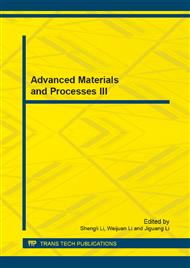p.662
p.667
p.672
p.678
p.686
p.691
p.699
p.703
p.708
Amplification and Bioinformatics Analysis of IGS1 Sequence of Aurcularia Auricular
Abstract:
The intergenic spacer 1 (IGS1) region in rRNA gene of Auricularia auricula was PCR-amplified and sequenced, and the sequence was analyzed by using bioinformatics technology. The two-way sequencing results were spliced by DANMAN software and used MEGA5.10 to analyze sequence variability, calculate genetic distance and construct phylogenetic tree. The amplified fragment length of intergenic spacer 1 (IGS1) gene was about 954bp ~1162bp, GC content of 51.90 to 52.02%, 73 nucleotide variable sites, 16 parsimony informative sites. Variable sites were mainly concentrated in the201~232bp and 714~884bp region. IGS1 sequences have great extent Compared with other 9 species from the GenBank according to the analysis of distance matrix, the genetic relationship between strains and the related known species from systematic dendrogram, IGS1 sequence analysis supports the traditional classification of Auricularia based on morphology. IGS1sequences variation could distinguish the difference between Araucaria species, it could be used as a supplement study genetic diversity method.
Info:
Periodical:
Pages:
686-690
Citation:
Online since:
September 2013
Authors:
Price:
Сopyright:
© 2013 Trans Tech Publications Ltd. All Rights Reserved
Share:
Citation:


